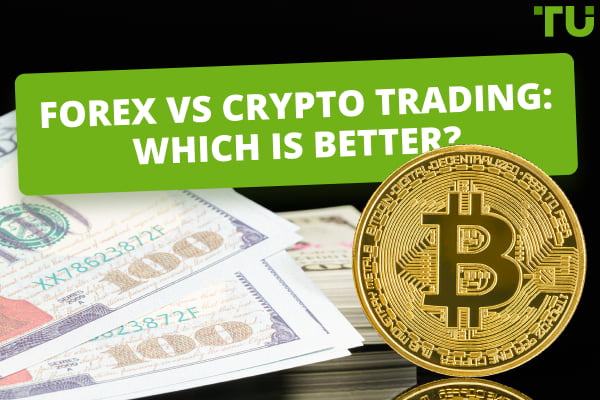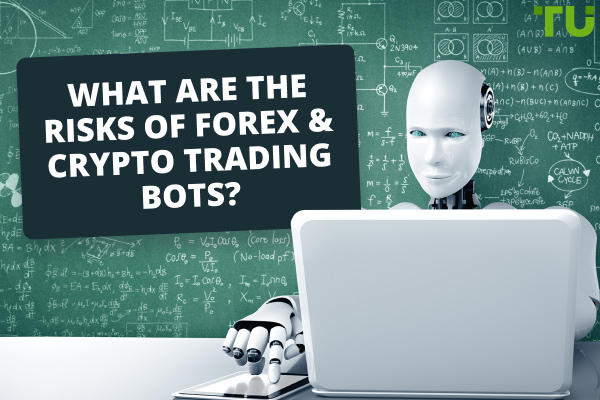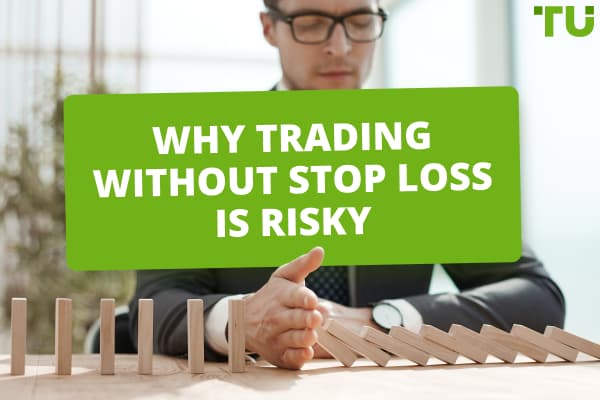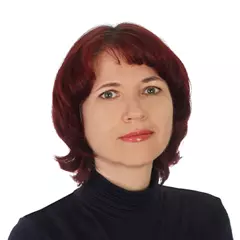DeFi: how to make money on decentralized tokens
In a traditional financial system, users strongly rely on banks, insurance companies, credit organizations and other intermediaries. In recent years, the DeFi ecosystem that features a set of financial instruments based on the blockchain technology with an open source code is rapidly gaining popularity in various countries. Decentralized finance system is used as an alternative to the banking sector – any participant of DeFi projects can perform financial transactions without restrictions with other users directly, without intermediaries. This kind of approach allows you to not only freely dispose of finance, but also opens new opportunities for crediting and investing in cryptocurrency assets.
In this article we will review how the DeFi system works, are there prospects for this area and discuss the ways to earn a profit on decentralized tokens.
Start investing in DeFi tokens right now with ByBit!What is DeFi?
DeFi is an independent financial ecosystem that is a set of financial instruments in the format of blockchain-based services and apps. The main task of the decentralized finance sector is to replace the generally accepted technologies of the existing financial system with open source instruments. As the popularity of the DeFi ecosystem grows, an increasing number of users around the world are gaining access to beneficial loans, an ability to quickly perform financial transactions and earn a profit from trading digital assets. This is a promising solution for residents of developing countries and states, who have limited access to banking and credit services. DeFi system currently provides the full range of financial transactions:
Receiving and granting loans.
Registering deposits.
Performing money transfers.
Performing trading transactions.
Managing financial assets through p2p and dApps, etc.
As of January 2023, the cash turnover in the DeFi industry reached USD 322.41 billion. Experts predict further rapid growth of this industry in the future. There are several ways to make money using your assets in decentralized finance projects – users can buy and hold cryptocurrencies, open deposits, attract and issue loans, trade, etc.
DeFi project ecosystem
As the digital technologies develop, the DeFi ecosystem is rapidly gaining popularity, as it is the most convenient for making peer-to-peer transactions. Decentralized platforms use secure protocols of smart contracts with an open source, operating on the blockchain. Any user of the network can use them to receive loans, acquire digital assets, earn money on holding and distributing cryptocurrencies, perform money transfers all around the world within any lines and paper red tape.
The decentralized finance ecosystem is developing in several areas:
Decentralized exchanges
Decentralized exchanges (DEX) – clients of these platforms can buy or sell tokens for real money or digital assets without depositing funds on the exchange’s account. These include Uniswap and Kyber.
Insurance services
Insurance services – their users hold funds in smart contracts and can conclude asset insurance agreements. Examples of the services are Opyn and Nexus Mutual.
Lending-deposit platforms
Lending-deposit platforms provide services of issuing loans and making savings deposits directly between users, without the involvement of intermediaries. The most popular platforms are MakerDAO and Compound.
DeFi wallets
DeFi wallets are decentralized wallets that allow you to safely hold, accumulate and dispose of digital assets. The most popular platforms include InstaDApp and Melon. If you are interested in How to choose the best DeFi wallet, read the Traders Union article.
P2P Services
P2p services allow users to exchange cryptocurrencies without intermediaries.
Derivatives
On the UMA Synthetix platforms, users can earn on trading digital asset derivatives (futures, forwards, options, etc.).
Decentralized oracles
These are the platforms for earning a profit on forecasts – Augur and Syntex services offer a feature of making a forecast of the result of a certain event. If your forecast is correct, you get a reward.
The decentralized finance industry is rapidly gaining momentum, with new areas for development constantly emerging in it. Experts predict the emergence of new services in the area of DeFi and an increase in turnover in existing projects in the coming years.
Examples of DeFi projects
The number of DeFi projects in the world is already in the hundreds. Some of them have already made significant progress. Let's take a closer look at some examples of successful projects.
7 Best DeFi Coins to InvestMakerDao
MakerDao is the most popular DeFi project. It was launched in 2017. The platform currently accounts for over a half of locked Ethereum tokens. The platform has a wide functionality, although the Collateralized Debt Position (CDP) option based on smart contracts enjoys particular popularity among users. The position is created by locking collateral (a specific number of ETH) in MakerDAO's smart contract to generate its decentralized stablecoin, DAI. A participant essentially takes out a loan on the MakerDao platform secured by collateral in liquid cryptocurrency. The funds received can be used by clients for their own purposes, creating an alternative to expensive bank loans.
Chainlink
The existence of many decentralized projects is impossible without the oracles. It is necessary for the interaction with different kinds of information. Chainlink platform is currently the leader in this area. It provides a decentralized set of data through the system of oracles and smart contracts. Since 2019, Chainlink has opened over 75 price channels for 300 smart contracts. The platform has a native token named LINK token, which is used internally by the platform to provide grants to crypto initiatives, which the ecosystem considers useful for itself and also for the transactions inside the system.
Avalanche
Avalanche is a smart contracts platform developed for launching decentralized applications. It is focused on finance – apps, assets for the industry, etc. Avalanche is built on a virtual Ethereum machine; it allows segmentation for certain apps. The platform has also gained popularity for supporting programmability of services at the network level and NFT support. Avalanche’s native token, AVAX, operates on a Proof-of-Stake consensus mechanism. Thanks to this, staking is supported. An important feature of the token and the system as a whole is the high speed of transactions, where they are validated in less than a second.
Uniswap
Uniswap is the largest Ethereum-based decentralized cryptocurrency exchange. The platform was established in 2017. The trading protocol at Uniswap operates as an automatic market maker. It automatically determines the price of cryptocurrency based on the ratio of 2 digital currencies in the pool. The important feature is that you can exchange even the tokens of the liquidity provider at Uniswap. If a token is not available at Uniswap directly, but the liquidity provider has it, it will be available for exchange. Users can create new liquidity pools. The platform has its own governance token Uniswap (UNI). It is used for internal transactions inside the platform.
Synthetix
Synthetix is one of the most actively growing companies in the decentralized finance sector. This protocol provides asset insurance. It is Ethereum-based. Synthetix allows you to develop synthetic presentations of real assets in the form of tokens. These tokens are pegged to the price of the asset they are based on. The assets support pegging thanks to the absence of arbitration. In addition, open market liquidity is available on Synthetix for synthetic assets on other DeFi exchanges. The platform uses a native token called SNX.
DeFi benefits
The DeFi ecosystem makes asset management easier for ordinary users and opens new investment opportunities. Let’s review the key benefits of decentralized services:
Self-management and minimal impact of the human factor. The DeFi system does not provide for a centralized management structure – the sequence and rules for performing business transactions are laid out in a smart contract. Once the protocol is launched, the application begins to function independently, with minimal human involvement.
Transparency. The decentralized finance system uses open source protocols. This feature allows users to audit and identify possible bugs, and also use the protocols to integrate with other services. All transactions of the platforms are public; the majority of the platforms do not require verification;
Availability. All DeFi systems are available 24/7 to any Internet user. You don’t need to visit a bank, stand in line or fill out paper forms in order to manage finance.
Ability to independently create apps. Thanks to the open source code, the apps on smart contracts can be combined and new products can be built on their basis – DEF exchanges, stablecoins, prediction services, etc.
DeFi drawbacks
However, DeFi also has certain drawbacks, which need to be considered when investing in such projects. The key drawbacks include the following:
High volatility. The volatility factor creates significant liquidity, but also credit risks. If the price of the underlying assets locked in the CDP drops, then mass liquidation of assets is possible. Ultimately, this can lead to the collapse of the entire system. DeFi systems combat these risks by backing loans with an excess amount of assets.
Hacks of smart contracts. There is a technical possibility of interfering with the operation of smart contracts. Due to this, a smart contract may not be executed even if all the necessary conditions are met.
Centralized data flow. Decentralized protocols receive information about the outside world using oracles. However, if the operation of an oracle is changed or is focused only on specific news, the operation of a smart contract may be at risk. This risk can be mitigated by the development of decentralized oracles. The work is already under way.
Shortage of capital in DeFi. The key issue with loans is that there are not enough funds for lending in this sector yet. The loans can be obtained under an appropriate collateral, and while they are small.
DeFi is a relatively new technology; therefore, it will take certain time to remove the key drawbacks, although the work in this direction is already active and the biggest drawbacks may be removed quite soon.
How to invest in DeFi tokens?
There are two ways to invest in DeFi: buying tokens using the “buy-and-hold” strategy and “yield farming”. The first method is the same as for a number of other investment assets. You buy decentralized tokens expecting their value to increase in the future. If the price increases, the investor earns a profit.
Yield farming is an alternative way of earning income. It is a special mechanism that involves receiving native tokens for interacting with DeFi protocols. An investor can receive tokens by providing liquidity to decentralized exchanges, get loans and rewards for them in the form of DeFi tokens, participate in different surveys to improve the ecosystem, etc. A trader gets a reward for performance of certain actions provided by the system. It is also important to know how to choose the tokens to invest in. When making a choice, take notice of the following indicators:
Total Value Locked (TVL) is the amount of funds locked in smart contracts. The higher the total value locked, the more actively the users interact with the platform, which has a direct impact on the prospects of the project.
Market capitalization is the total value of assets calculated on the basis of current market prices. Capitalization increases as the quotes at the exchanges grow.
Interest rates in DeFi protocols. In DeFi, the interest rates are calculated separately for each asset. The logical decision would be to invest in a digital asset that offers a higher rate.
The number of issued tokens and model of operation. The model can be inflationary (without emission limits) or deflationary (with strictly limited emission). Bitcoin is an example of a deflationary cryptocurrency – there cannot be more than 21 million crypto coins. However, there are many projects without limits, and the more coins that hit the market, the lower their price.
The best decision would be to distribute the investment budget among several types of tokens, as it will help diversify the risks.
DeFi Lending Platforms ComparisonWhere do I buy DeFi tokens?
Binance is the best choice for buying DeFi tokens. Binance is the top cryptocurrency exchange, where over 300 types of cryptocurrencies and tokens, including DeFi, are traded. Binance offers a multi-level Maker/Taker fee schedule. The more a trader trades on the platform, the higher his 30-day trading volume is, the lower the fees he pays.
In addition to trading directly at the exchange, Binance also offers an opportunity to buy tokens directly through P2P exchange. The cryptocurrency also offers staking as a passive income option. You can lock a certain amount in cryptocurrency for a specific period of time and earn a profit with interest.
Summary
Decentralized finance is believed to be the future of the global financial system. DeFi projects have already become highly popular, while the sector continues to grow. DeFi has a good outlook with the number of projects, as expected, continuing to increase. Therefore, investing in such projects may turn out to be very lucrative.
However, before investing your money, you need to choose the right project. Keep in mind that investing in DeFi carries risks. Therefore, always follow the rules of risk management.
FAQs
What currency can I buy DeFi tokens for?
It depends on the exchange. If an exchange supports fiat money, you can use USD or EUR. If only cryptocurrencies are supported, USDT is usually used.
Where do I hold DeFi tokens?
In order to hold tokens, you need to open a cryptocurrency wallet that supports the type of tokens you are planning to buy, for example Metamask.
Are there scam risks in DeFi?
Yes, there are. For example, the Pump and Dump scheme can be used here. Therefore, we recommend that you choose responsibly.
Glossary for novice traders
-
1
Broker
A broker is a legal entity or individual that performs as an intermediary when making trades in the financial markets. Private investors cannot trade without a broker, since only brokers can execute trades on the exchanges.
-
2
Cryptocurrency
Cryptocurrency is a type of digital or virtual currency that relies on cryptography for security. Unlike traditional currencies issued by governments (fiat currencies), cryptocurrencies operate on decentralized networks, typically based on blockchain technology.
-
3
Trading
Trading involves the act of buying and selling financial assets like stocks, currencies, or commodities with the intention of profiting from market price fluctuations. Traders employ various strategies, analysis techniques, and risk management practices to make informed decisions and optimize their chances of success in the financial markets.
-
4
Ethereum
Ethereum is a decentralized blockchain platform and cryptocurrency that was proposed by Vitalik Buterin in late 2013 and development began in early 2014. It was designed as a versatile platform for creating decentralized applications (DApps) and smart contracts.
-
5
Volatility
Volatility refers to the degree of variation or fluctuation in the price or value of a financial asset, such as stocks, bonds, or cryptocurrencies, over a period of time. Higher volatility indicates that an asset's price is experiencing more significant and rapid price swings, while lower volatility suggests relatively stable and gradual price movements.
Team that worked on the article
Andrey Mastykin is an experienced author, editor, and content strategist who has been with Traders Union since 2020. As an editor, he is meticulous about fact-checking and ensuring the accuracy of all information published on the Traders Union platform. Andrey focuses on educating readers about the potential rewards and risks involved in trading financial markets.
He firmly believes that passive investing is a more suitable strategy for most individuals. Andrey's conservative approach and focus on risk management resonate with many readers, making him a trusted source of financial information.
Olga Shendetskaya has been a part of the Traders Union team as an author, editor and proofreader since 2017. Since 2020, Shendetskaya has been the assistant chief editor of the website of Traders Union, an international association of traders. She has over 10 years of experience of working with economic and financial texts. In the period of 2017-2020, Olga has worked as a journalist and editor of laftNews news agency, economic and financial news sections. At the moment, Olga is a part of the team of top industry experts involved in creation of educational articles in finance and investment, overseeing their writing and publication on the Traders Union website.











